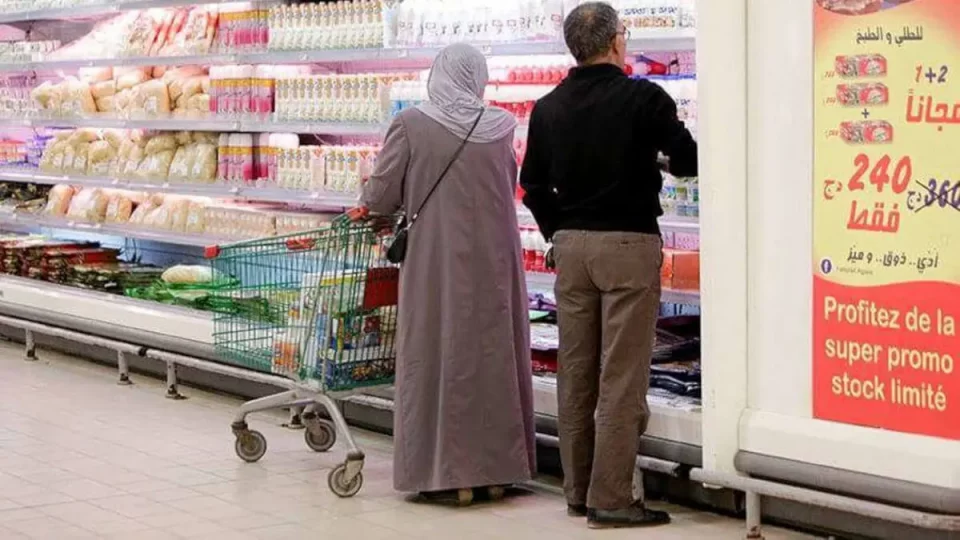By Riad Beladi
The grocery market in North Africa is valued at tens of billions of dollars annually and continues to show steady growth despite global inflation, import dependency, and evolving consumer habits. The region’s five largest markets — Egypt, Algeria, Morocco, Tunisia, and Libya — each present unique challenges and opportunities, shaped by population growth, purchasing power, and local supply capabilities.
Egypt: The Powerhouse of North African Retail
Egypt holds the largest grocery market in the region, supported by a population exceeding 110 million and a rapidly expanding urban base. Modern retail is growing through hypermarkets, discount stores, and online delivery platforms.
The market remains heavily dependent on imported goods, particularly wheat, vegetable oils, and packaged foods. Price sensitivity defines consumer behaviour, with value-for-money and promotional offers driving purchasing decisions. Nevertheless, middle-income households are increasingly drawn to branded and convenient products, reflecting the gradual modernisation of retail culture.
Online grocery shopping, now embedded in urban lifestyles, is becoming a major growth driver. The hybrid model of physical and digital retail continues to shape Egypt’s food distribution system.
Algeria: A Controlled Market in Transition
Algeria represents one of North Africa’s largest grocery markets, with a strong local food production base complemented by substantial imports of processed and packaged goods. Government involvement remains high, especially in import licensing, subsidies, and price regulation.
While large-scale supermarket expansion is still limited compared to other regional markets, consumer preferences are shifting towards branded, locally manufactured, and packaged products. Urban centres such as Algiers, Oran, and Constantine are witnessing the rise of modern retail outlets, while rural areas remain dominated by traditional shops.
Economic reforms and an increasing number of private distributors are expected to encourage more competition and efficiency in the sector over the next few years.
Morocco: Innovation and Packaged Growth
Morocco’s grocery sector is one of the most dynamic in North Africa, driven by a growing middle class, a thriving tourism industry, and an expanding modern retail network. Packaged food sales continue to increase, supported by rising demand for convenience and international products.
Although Morocco maintains a solid domestic agricultural base, it still relies on imports for several categories, particularly processed food and premium goods. Urban consumers show a growing preference for healthy and organic products, with supermarkets and convenience stores adapting their assortments accordingly.
Retailers are investing in digital transformation and logistics to reach customers beyond major cities, helping to balance modern trade growth with traditional market resilience.
Tunisia: Compact, Competitive, and Price-Sensitive
Tunisia’s grocery market is smaller in size but marked by steady growth in packaged and processed foods. Economic pressures and currency fluctuations have influenced consumer behaviour, pushing many towards affordable local alternatives.
Despite the price-conscious environment, there is visible demand for ready-to-eat meals, frozen products, and health-oriented foods. The rise of supermarkets and convenience stores in coastal cities like Tunis, Sfax, and Sousse reflects gradual modernisation in retail habits.
E-commerce and digital payment solutions are beginning to play a role, particularly among younger consumers, signalling a slow but promising shift in grocery retail innovation.
Libya: Fragile Market, Full Dependency
Libya’s grocery sector remains small and heavily dependent on imports for nearly all food categories. Political instability and currency fluctuations have disrupted supply chains and caused price volatility, affecting both availability and consumer confidence.
Traditional open markets and small independent stores dominate retail, with limited presence of formal supermarket chains. Importers and distributors operate under challenging conditions, often relying on short-term procurement to mitigate risk.
While household consumption remains relatively strong due to oil revenue, structural weaknesses continue to hinder market stability and long-term investment in modern retail.
Regional Consumer Behaviour Trends
Across North Africa, consumer behaviour reflects a mix of traditional values and modern aspirations. Price remains the most influential factor in purchasing decisions, but demand for convenience, quality, and safety is rising. Younger, urban consumers are more willing to explore online grocery platforms, private labels, and premium products, while older demographics continue to favour established local retailers.
Health and sustainability awareness are growing, leading supermarkets to stock more organic and plant-based options. The “Made in Country” label is gaining popularity, as consumers show preference for local products that offer both affordability and national identity.
Market Outlook
North Africa’s grocery sector is entering a new phase of transformation. The combination of urban expansion, population growth, and digital retail is creating opportunities for both local producers and international suppliers. However, the region’s dependence on imports, coupled with foreign currency and logistics challenges, continues to test the resilience of its food systems.
Over the next five years, Egypt and Morocco are expected to lead growth in modern retail and e-commerce, while Algeria’s gradual reforms could unlock significant potential in domestic production and distribution. Tunisia and Libya, although smaller, will remain important markets for basic food imports and regional trade.

